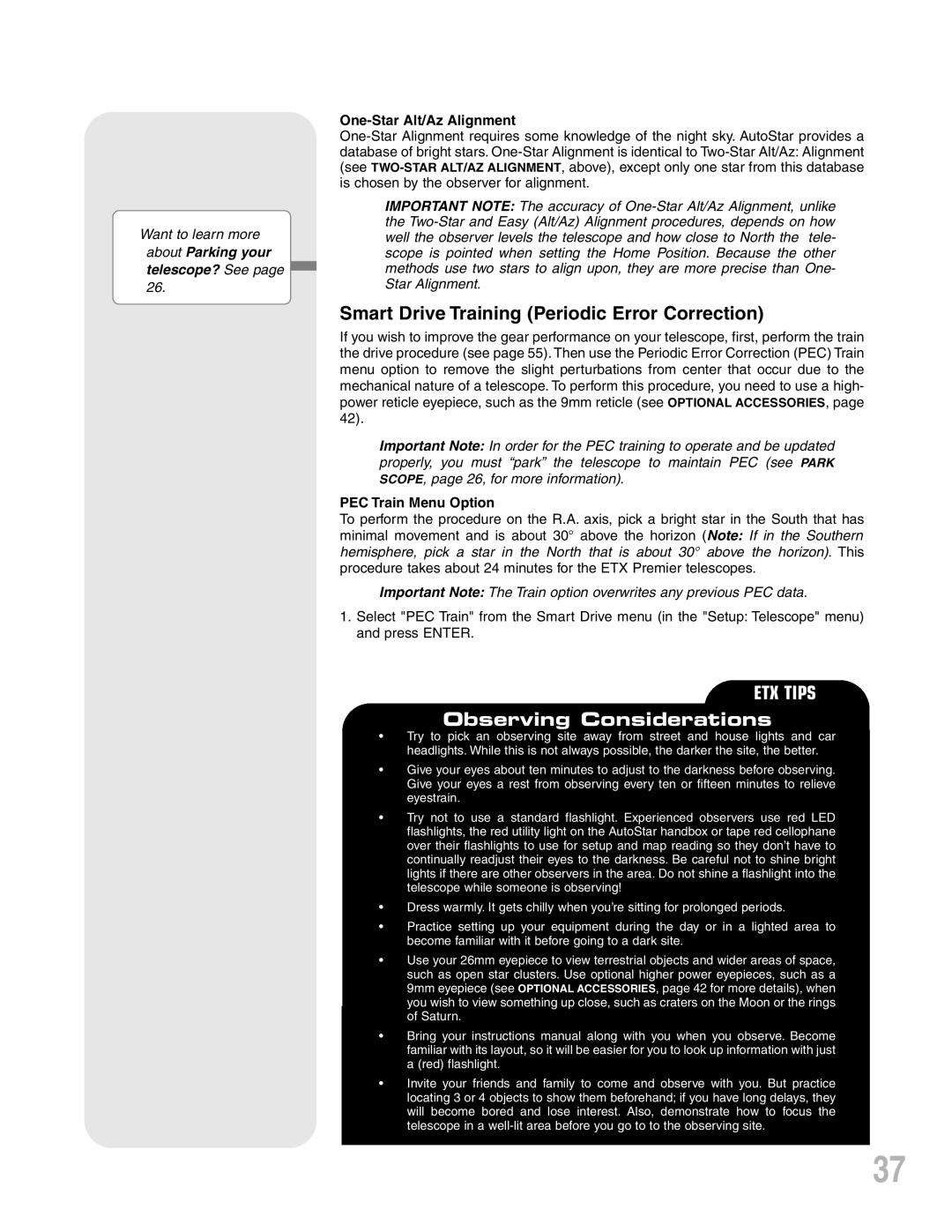
Want to learn more
about Parking your telescope? See page
26.
IMPORTANT NOTE: The accuracy of
Smart Drive Training (Periodic Error Correction)
If you wish to improve the gear performance on your telescope, first, perform the train the drive procedure (see page 55). Then use the Periodic Error Correction (PEC) Train menu option to remove the slight perturbations from center that occur due to the mechanical nature of a telescope. To perform this procedure, you need to use a high- power reticle eyepiece, such as the 9mm reticle (see OPTIONAL ACCESSORIES, page 42).
Important Note: In order for the PEC training to operate and be updated properly, you must “park” the telescope to maintain PEC (see PARK SCOPE, page 26, for more information).
PEC Train Menu Option
To perform the procedure on the R.A. axis, pick a bright star in the South that has minimal movement and is about 30° above the horizon (Note: If in the Southern hemisphere, pick a star in the North that is about 30° above the horizon). This procedure takes about 24 minutes for the ETX Premier telescopes.
Important Note: The Train option overwrites any previous PEC data.
1.Select "PEC Train" from the Smart Drive menu (in the "Setup: Telescope" menu) and press ENTER.
ETX TIPS
Observing Considerations
•Try to pick an observing site away from street and house lights and car headlights. While this is not always possible, the darker the site, the better.
•Give your eyes about ten minutes to adjust to the darkness before observing. Give your eyes a rest from observing every ten or fifteen minutes to relieve eyestrain.
•Try not to use a standard flashlight. Experienced observers use red LED flashlights, the red utility light on the AutoStar handbox or tape red cellophane over their flashlights to use for setup and map reading so they don’t have to continually readjust their eyes to the darkness. Be careful not to shine bright lights if there are other observers in the area. Do not shine a flashlight into the telescope while someone is observing!
•Dress warmly. It gets chilly when you’re sitting for prolonged periods.
•Practice setting up your equipment during the day or in a lighted area to become familiar with it before going to a dark site.
•Use your 26mm eyepiece to view terrestrial objects and wider areas of space, such as open star clusters. Use optional higher power eyepieces, such as a 9mm eyepiece (see OPTIONAL ACCESSORIES, page 42 for more details), when you wish to view something up close, such as craters on the Moon or the rings of Saturn.
•Bring your instructions manual along with you when you observe. Become familiar with its layout, so it will be easier for you to look up information with just a (red) flashlight.
•Invite your friends and family to come and observe with you. But practice locating 3 or 4 objects to show them beforehand; if you have long delays, they will become bored and lose interest. Also, demonstrate how to focus the telescope in a
37
